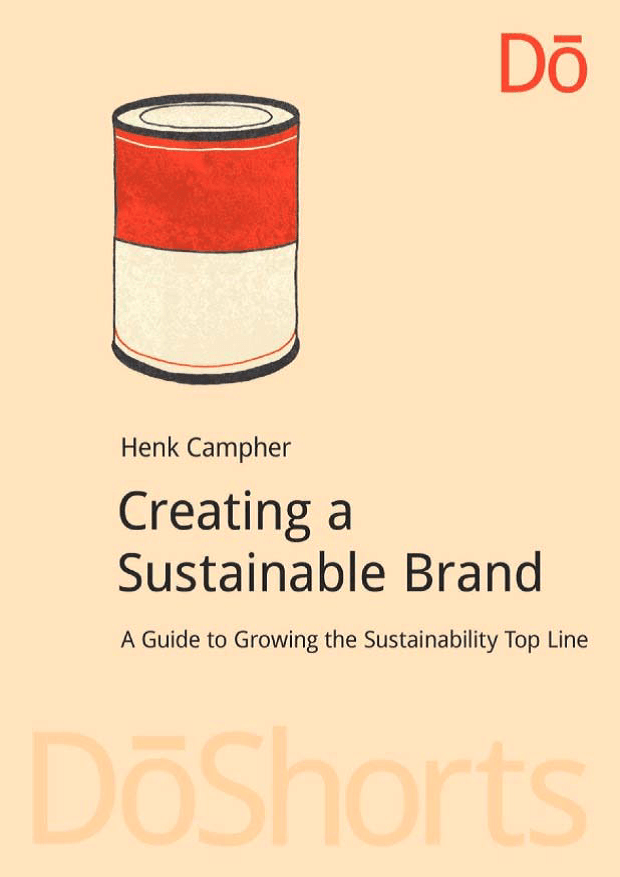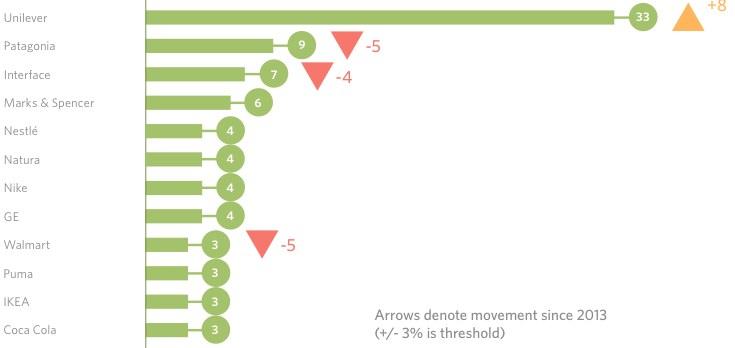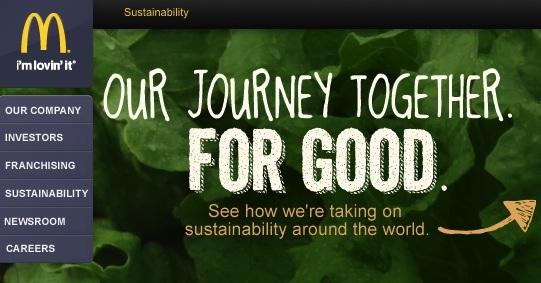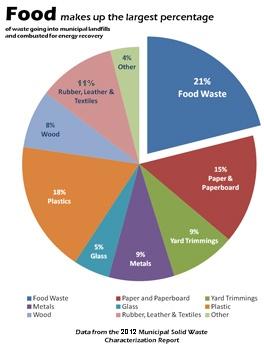Book Review: The Dance of the Sustainable Product and Brand


What exactly is a sustainable brand, and how does an entrepreneur or company get there? Better yet, how does a consumer know what he or she is getting when a brand is labeled as "sustainable"?
These are not easy questions but Henk Campher has some clear thinking on the subject in a new e-book, "Creating a Sustainable Brand: A Guide to Growing the Sustainability Top Line."
Is there a template for creating a sustainable brand, a fusion of product and branding? Campher’s answer is yes: “It’s when these two dance that we create consumer breakthrough and the magic happens.”
To establish a sustainable brand, “Look at the dance between the product and the brand.” Before the dance occurs look at both how the product is made and at its impact. The same dual approach should be applied to the brand. “We need to know how sustainability comes to life in the action it takes and the stories it tells, as well as how deep (or not) sustainability is embedded into the brand value proposition and identity.”
It starts with the consumer. Campher suggests that: “We might need to reassess the ways we look at consumers when we use our sustainability lens.
“This is the holy grail of sustainability after all – getting more consumers to buy into the idea of sustainability.” More specifically, the trick is “getting more consumers to buy truly sustainable products – even if they do sometimes cost more.”
So don’t expect a revolution in sustainable branding – expect an evolution. Why? Edelman’s brandshare study confirms the hypothesis that consumers want to buy, use, recommend and support brands that share their values. Campher calls it the great unmet demand. “In fact, 90 percent of people across the world want brands to share with them.” Everyone is ready to move at a faster pace, but it isn’t happening. Again why? Campher cites the same study, showing that only 10 percent of consumers think that brands share their values.
“We are wrong when we think consumers aren’t buying into sustainability and aren’t buying products and brands they believe add to a more sustainable lifestyle and world. They are but not the way we want it. And that is our problem, not theirs. This is a business problem to solve, not a consumer’s.”
He continues that the trick is to “find better ways to bring sustainability to life for the consumers in ways that will resonate with them, and foster even faster growth. To find the solution we need to look closer at brand – the soul of a product identity.”
Consumers need to know how sustainability fits into the brand and the product itself to get to a sustainable brand. So the crux of this short and highly readable book is in Campher’s explanation of a sustainable brand model. The model he proposes focuses on two sets of criteria: the impact a product has through its value chain and the inherent value of the product itself.
- Value chain impact: “The value chain impact looks at the social, environmental and economic impact of a product in its creation and life in the marketplace, from sourcing to manufacturing to transport to the marketplace to post-consumer. Everything that it takes to bring a product to life and through to the end of the product life. Simply put, assessing the impact via a product life cycle assessment.”
- Inherent value impact: “The second part of the model looks at the inherent value of the product itself. The question it tries to answer is whether a product creates a positive or negative good and what is the long-term impact of the product. Does it help address a key sustainability need of the world or is it a product that is a luxury or driven by want and greed?”
Product sustainability goes hand-in-hand with building a sustainable brand: “Just because a product delivers a positive good does not mean that is a sustainable product. You can create a wind turbine by using slave labor, conflict minerals and dodging taxes. That makes the product itself of great value to society but the value chain impact is horrendous.”
So product sustainability means a product is responsibly created, and that creates positive good. Sustainability branding takes a different approach from product sustainability, however, because it isn’t about its material impact. “Branding is about how the brand comes to life in the marketplace and how values and value comes to life in the brand.”
And that’s the dance: Merging the two pillars of a sustainable brand – product sustainability and branding sustainability – allows for the creation of a model, in the form of a diamond, for developing a sustainable brand.
Briefly, a sustainable brand occurs where value chain impact, sustainability association, brand impact and inherent value impact are strong — the four elements converge at the center of the diamond.
Campher concludes that the sustainable product and sustainability branding “are the yin-yang of a sustainable brand. You can’t have one and none of the other. The Sustainable Brand Model provides a way for us to evaluate the claims made by brands as well as provide brands with a tool to get closer to that elusive sustainable brand status.”
Campher’s key takeaways:
- What is needed is not a change in consumer behavior but a change in brand behavior.
- Not all brands are born equal – some are by nature more sustainable than others.
- Brands fail when they ignore weaknesses and oversell perceived strengths.
- A sustainable brand is defined by how the product and brand interact and combine.
- Product sustainability must include both the value chain impact as well as the inherent value of the product itself.
- Sustainability branding must include both the way a brand connects with the consumer and how it aligns with sustainability.
- Brands are dynamic and can adapt and change to strengthen their claims as a sustainable brand.
- The Sustainable Brand Model allows a brand to find its unique sustainable brand value proposition and identify areas of weakness.
Campher has hit on something: the need to understand product sustainability “if we want to know how to build a sustainable brand that consumers will love and buy.”
Image credit: "Creating a Sustainable Brand: A Guide to Growing the Sustainability Top Line" book cover.
Ed Note: Readers can get a 3p discount on this book by using the code "Campher15" at this link.
Survey: In the 'Mainstreaming' CSR Era, Unilever Rules (And Polman is the King)


Globescan and SustainAbility released the 20th edition of their sustainability leadership survey, and most of the results are largely unsurprising. According to the responses of more than 800 people working in business, government, NGOs and academia in 89 countries, industry stakeholders have all but completely lost faith in the government’s ability to create change, the Rio conventions don’t matter and technology is becoming one of the most promising sustainability drivers. But one statistic from the survey results, which were recorded in March, does stand out — Unilever’s 22-point margin lead in the corporate ‘sustainability leadership’ category.
The Anglo-Dutch corporation is well-known for its sustainability efforts, but even report authors seemed a bit surprised by Unilever’s dominance in that category, which asked which companies best integrated sustainability into their business practices. With 33 percent of the vote — an eight point increase over last year — 2014 marks the fourth year in a row that the company nabbed the number one spot. Patagonia followed in second place with just 9 percent of the vote.
“We need to find ways for other companies to play a role and be recognized for it,” said Chris Guenther, one of the report’s authors, in a webinar presentation on Wednesday.
Other top companies in the corporate leadership category included Interface, Marks & Spencer and Nestlé. Walmart, Puma, Coca-Cola and Ikea — in its leaderboard debut — rounded out the top-12 list with 3 percent of the vote each.
But no one came close to catching Unilever, which held the top spot with the widest margin of votes in the 20-year history of the Globescan survey.
So what is Unilever’s secret to being the hands-down leader among sustainabilty stakeholders? And what do they have to do to last at the top spot in a notoriously fluid landscape?
Unilever’s global business focus and vocal marketing efforts are two factors working in the company’s favor, Guenther and Chris Colter, CEO of Globescan and report co-author, said on Wednesday. Unilever’s sales growth is increasingly driven by emerging markets, and it has focused some of its more visible sustainability and health efforts — like a public handwashing campaign in Asia, Africa and Latin America — in those markets. In the Globescan/SustainAbility survey, the company was top-ranked by experts in every region except Oceania and Latin America.
While the survey didn’t dig into respondants’ reasons for voting on each company, Colter also points to Unilever’s messaging approach as a possible differentiator. The company’s messaging “is not just about ‘look how great Unilever is’,” said Colter, and instead broadcasts a more genuine-feeling focus on “changing business models and business culture,” he said.
But Unilever’s real secret ingredient might actually lie in its charismatic CEO. “The emotional appeal of Paul Polman is striking and influences this quite significantly,” said Colter. Polman is known for his ability to gain consensus among both the sustainability crowd and traditonal business concerns. The result is an effect that is “hard to duplicate in other companies because of the uniqueness of his leadership, but it's one of those elements that goes beyond the [company’s sustainability] framework,” he said.
Backed by 20 years of industry surveys, Globescan and SustainAbility charted the evolution of corporate social responsibility (CSR) through roughly three distinct eras. Their polls show an extremely fluid landscape, where companies fall in and out of favor with the sustainability crowd. Companies that are now in the CSR gutter, like Monsanto and BP, were among the highest-rated just a decade ago. Besides Unilever, the only company to hold the top spot in the survey for more than two consecutive years was Shell, at number one from 1999 through 2004 and now not even among the top 12.
Report authors call the first wave of prominent CSR efforts, beginning in the 1990s, the age of “do no harm.” This was led by energy and chemical companies — like Shell, BP and Dow — that focused on risk managmenet and minimizing environmental impact. Around 2007, the authors noted, this approach gave way to a “mainstreaming” strategy in response to increased consumer awareness of sustainability issues. Consumer product companies — like Walmart, GE and Patagonia, which are some of the top survey performers in the past six years — have deployed high-profile, branded sustainability campaigns that target ambitious goals and focus on consumers, as well as supply chains.
Now, say the report’s authors, companies at the forefront of CSR, like Unilever, are further refining their strategies into a new type of approach that they dub “extended leadership.” In order to stay at the top of the CSR heap, they say, companies will have to not only integrate sustainability into the supply chain, but also be a vocal advocate for sustainability-related action on a public and political level.
More broadly, as governments around the world disappoint on environmental and social action, the private sector is increasingly seen as the lynchpin of sustainability efforts. Indeed, 56 percent of survey respondents said that business will be a major driver of sustainability progress in the next five years, just behind technology at the top spot with 60 percent of the vote.
The “extended leadership” approach could be a crucial tool in affecting systems-wide change. But as we see companies rise and fall on sustainability performance over the years, is expecting advocacy beyond the realm of business just wishful thinking?
Image credi: Globescan/SustainAbility
24/7 Concentrating Solar Power Plant Gains Approval in Chile


Spanish sustainable energy multinational Abengoa on May 9 announced that the Chilean Environmental Service's Evaluation and Review Committee unanimously approved its concentrating solar power (CSP) and energy storage project. The project is planned for the country's northern Atacama Desert region, which has the highest levels of solar radiation in the world, and will produce 110 megawatts of energy.
Dubbed Cerro Dominador, Abengoa's CSP project is “groundbreaking” in more ways than one. In addition to being the largest CSP facility announced in South America to date, it will be “the first to serve as a baseload power plant” -- supplying electricity 24 hours a day, seven days a week -- thanks to a molten-salts energy storage system capable of storing the equivalent of some 18 hours worth of electricity production, Abengoa explains in a press release.
Coming amid ongoing technological advances, the integration of grid-scale energy storage capacity in CSP (also known as solar thermal power) plants is being touted as a potential “game-changer” for the technology despite concerns and controversy regarding its environmental impacts.
Concentrating solar power and the environment
Generating environmental concerns and controversy here in the U.S., the Ivanpah Solar Electric Generating Station was commissioned this past February in California's Mojave Desert 140 miles southwest of Las Vegas.
The massive $1.6 billion, 392-MW (gross)/377-MW (net) plant, developed by BrightSource Energy with financial backing from NRG and Google, was built on intact desert habitat. Construction was temporarily called to a halt in the spring of 2011 due to concerns about its impact on Mojave desert tortoises, which are classified as threatened by the International Union for Conservation of Nature (IUCN).
Counterbalancing the environmental impacts of CSP plants, their triple bottom line benefits are substantial. As Abengoa states in its press release:
“The Cerro Dominador project forms part of the Chilean Government’s national renewable energy development program, intended to provide Chile with a clean energy future, while also promoting economic development and reducing the country’s dependency on coal and natural gas.”
Abengoa expects designing, building and operating the Cerro Dominador CSP facility will create 700 direct jobs and require up to 2,000 workers overall. Fifty long-term employees will be required once commercial operation begins. “Similarly, the development, commissioning and operation of the plant will generate a high number of indirect jobs, as well as a network of services and new industrial investments that will develop the local market, promoting economic growth in the country,” Abengoa adds.
Emissions-free, CSP projects also go a long way when it comes to climate change mitigation. Able to generate enough energy to power more than 140,000 California homes, the solar electricity produced by Ivanpah is projected to avoid more than 400,000 tons of carbon dioxide (CO2) emissions per year. Though its generation capacity is less than a third of Ivanpah's, Abengoa estimates the CSP at Cerro Dominador will avoid some 643,000 tons of CO2 annually.
In addition to climate-warming carbon and greenhouse gas emissions, the amount of water being used to generate electricity and produce transportation fuels has become an increasingly pressing, and costly, issue in the U.S. and globally over the past decade.
CSP at the Water-Energy Nexus
Compared to fossil-fuel energy sources, particularly oil and gas extracted from shale deposits by “fracking,” wind and solar power generation make minimal use of, and have a minimal impact on, water resources. As they produce electricity using conventional steam generation, CSP systems do use more water than solar photovoltaic (PV) or wind power systems. The water in CSP systems is recycled and used over and over again in a closed-loop, however, which minimizes the water required in electricity generation.
CSP systems also make use of water for cooling. At Ivanpah, BrightSource is using a dry, air cooling system. That results in Ivanpah using 90 percent less water than a conventional wet-cooled CSP plant, according to BrightSource.
CSP and integrated grid-scale energy storage
Acknowledging concerns about the environmental impacts of CSP plants, Research & Markets believes they will be assuaged, or at least overcome, and that the net benefits utility-scale CSP plants afford as compared to conventional fossil-fuel power plants will win out.
Assessing the environmental impacts of Cerro Dominador, Chilean environmental experts “took into account issues such as use of the land, water, air, emissions, and waste, as well as any other aspect that could generate an environmental impact in the area where the plant will be constructed,” Abengoa highlights.
Integrating grid-scale energy storage into utility-scale CSP plants is a milestone for the technology and intermittent renewable energy systems more generally. Abengoa was the first company to build and commercially launch a CSP-molten-salt power plant in the U.S.
Last October, Abengoa commissioned the world's largest parabolic-trough-and-tower CSP facility. With a rated generation capacity of 280 MW, the Solana CSP plant uses molten salt to store the equivalent of six hours worth of the plant's electricity output.
As Research & Markets sees it:
“Concentrating Solar Power (CSP) solar energy is the most promising and sustainable renewable energy; rolling out CSP systems offers both performance and competitive energy prices. CSP Solar provides a crucial energy solution that is utility scale and works 24x7 in combination with back-up stationary fuel cells.”
Whether making use of molten salts or hydrogen fuel cells, the integration of grid-scale storage capacity in CSP plants is a game-changer, according to Research & Markets. “A step-change in system costs is being achieved, putting the industry on the cusp of a major growth spurt,” the market research company asserts.
Image credits: 1) Abengoa, 2) BrightSource Energy; 3) Tractebel Engineering
From Haiti to Kenya: Creating Fashion That Empowers


By Jonathan Wiesner and Eric Fleet
Threads 4 Thought was founded in 2007 with a simple but clearly defined purpose. We are committed to creating and manufacturing fashion that empowers. Inherent in our core principles is 1) the concept that the fashion industry does not need to compromise on style in order to provide products that are created through the responsible and sustainable use of materials and resources 2) promoting a sense of social responsibility by working with factories that treat their employees humanely and fairly, and 3) giving back to our communities. Fashion that empowers is truly sustainable fashion.
As a brand, we are committed to sustainability that extends beyond just the materials we use. In the past year we have focused our charitable contributions toward supporting the International Rescue Committee’s New Roots community gardens. We have raised more than $200,000 in just under six months by contributing 10 percent of the retail price of our best-selling basic tee shirts directly to the IRC. In 16 cities across the United States, the IRC has established community gardens for refugees that have fled conflict and persecution to resettle here in the U.S. Most of these refugees have an agrarian background and the ability to grow vegetables helps them supplement the food that they purchase, and in some cases provides a source of additional income by selling produce in local farmers markets, and even in Whole Foods. We are proud that, through the support of our customers, we are helping to support a sustainable lifestyle for these refugees.
While the end result of our commitment to sustainability is our ability to give back to our communities, the process begins with how we source our products. All of our products are manufactured using certified organic cotton, post-consumer recycled polyester, Lensing modal, or blends of these materials. We then carefully select manufacturing partners that share our core principles of responsibility for each other and our world.
On Jan. 12, 2010 a cataclysmic earthquake struck just outside of Port Au Prince in Haiti. Three million people were affected by the earthquake, and up to 200,000 people perished. Prior to the earthquake, Haiti was one of the poorest, most desperate places on the planet, and now, in the aftermath of this horrific tragedy, the country had very few options for economic development. We visited Haiti shortly after the earthquake and left with a vision of partnering with a local factory to provide sustainable economic opportunity for a population that had very little hope. This vision has reached fruition, and we have just taken receipt of our first shipment of basic tees, the same basic tees that we contribute 10 percent of the retail price to help refugees achieve sustainability here in the U.S.
Halfway around the world from Haiti, Elizabeth Juma Mwamkono is a seamstress in Kenya in one of our partner factories. When Elizabeth was growing up in Taru, Kenya, many of the young people in her town turned to prostitution, drug abuse and violence to escape the economic uncertainty they faced with few legitimate job opportunities. Liz was determined not to follow her peers down these roads that ultimately led nowhere, and instead applied herself diligently on getting an education in spite of great financial hardship. If she could not afford textbooks, she borrowed them, if her family could not afford tuition, she borrowed notes from other students, and she absorbed every detail. Finally, her years of hard work paid off, and she passed her O Level exams in 2002 and was named one of the top performing students in her district.
“I couldn’t believe it when I saw my Kenya Certificate of Secondary Education,” Liz recalls. “At last my hopes had been fanned. The world was all mine for the taking." In 2006, Liz went to work for Wildlife Works, a carbon neutral Fair Trade factory in the heart of a preserved rain forest in Kenya. The partnership that we have developed with Wildlife Works helps sustain Liz and affirms her beliefs as she was growing up. Additionally, the factory itself serves as a model for sustainability. What began as a project to preserve 80,000 acres of valuable rainforest became the first REDD Carbon Credit project by providing income to the community for protecting their environment instead of destroying it. The money raised by selling the carbon credits provided the seed money for the apparel factory that now employs Liz and supplies Threads 4 Thought with some of our products.
The Thread that connects these stories is one of sustainability, and it is the genesis of our name… of our brand Threads 4 Thought. Sustainability is a commitment to conservation and the maintenance of an ecological balance. We achieve this by replenishing our resources rather than depleting them. As a sustainable apparel brand, we believe that we have created a lifestyle brand that embodies those characteristics through fashion that appeals to a generation of committed individuals, committed to the betterment of the planet and those we share it with. Sustainable fashion is not an oxymoron; rather it is a means to express our unity with a shared set of principles that apply to all aspects of how we live our lives. We eat consciously, we recycle, we bicycle, we donate time and money to causes we believe in, and we advocate. In short, we are Fashion That Empowers.
Image credit: Threads 4 Thought via Facebook
McDonald's Twitter Chat Recap: #McDsustainability


Our lively #McDsustainability chat with the McDonalds Corporation took place on May 7, 2014.
For the fast food giant, which restructured its corporate social responsibility (CSR) and sustainability team in 2012 to focus on developing a strategic framework, the process was, shall we say, meaty. Like a well-balanced meal, McDonald’s has put five portions on its CSR plate: Food, Sourcing, Planet, People and Community.
When a multi-national like McDonald’s with a worldwide presence and a complex network of stakeholders creates a CSR strategy, you expect flavor, complexity and challenges. And lots of discussion about the “right” approach.
“Our new CSR framework demonstrates our intent to grow the business while having a positive impact on society,” said Bob Langert, VP of Sustainability at McDonald’s. “Now, more than ever, customers care about their food and where it comes from. They want to know what companies like McDonald’s are doing to improve the world in which they live. Because of our size and scale, we can influence change for the better.”
Here are the Storify highlights from the #McDsustainability Twitter chat with Bob Langert, CSRwire, and our 227 chat participants:
We regularly conduct webinars and Twitter chats with our partner CSRwire. These chats are aimed at taking a pulse of our community, sharing knowledge and inspiring action. Whether the topic is sustainable living, shared value, or responsible careers, these interactive sessions help our clients push their communication boundaries and also gain valuable feedback, criticism and the attention of an active and engaged community.
How to Find Impact Investing Deals (or Develop Ones You've Already Got)


By Marta Maretich
The impact and sustainable investing market is crowded these days with big business, social entrepreneurs, private investors and governments all getting into the act. Yet recent research indicates that serious investors are still finding deal-sourcing a challenge. At the same time, intermediaries and entrepreneurs are still struggling to develop deals and find the right partners and collaborators to bring them to scale.
As Maximpact founder Tom Holland says in recent blog, “Despite the growth in the sector, many parts of it are still working in separate silos. Activity is up, more capital is invested, but the sector is still very fragmented. Many impact organizations don’t connect with the wider impact community or take advantage of the many possibilities it offers.”
As Holland points out, the disconnect between investors and investees—and the one that exists between those developing deals and the expert support and collaborative partners they need to succeed—is a persistent problem in the sector that may only be fully resolved with more market maturity. However, some infrastructure groups, like Holland’s own Maximpact, have been trying to tackle the problem head-on.
Maximpact Deals, for example, is an online community that aims to create a more sustainable future by fostering the growth of impact investing through sharing, collaborating and co-investing. Maximpact hosts this online listing platform, which allows entrepreneurs and intermediaries to showcase projects and ventures, giving them the opportunity to connect directly with partners and funders in the impact and sustainability industry.
The technology behind Maximpact Deals allows investors, corporate social responsibility (CSR) programs, intermediaries and philanthropists to engage directly with sustainable investment opportunities all over the world. A sophisticated search function allows users to pinpoint exactly the right investments and opportunities on the site and make immediate connections. Members can also use the platform to network and share resources with other members. And, because all registrants are approved and vetted by the Maximpact team, users can feel confident that they will interact with organizations whose values align with theirs. The site boasts 17 areas of focus, reflecting a wide range of causes and mission interests. Registrationis completely free, and there are no commission fees.
Since its launch in September 2012, Maximpact Deals has grown and evolved to facilitate high-impact collaborations with its open-collaboration model. Today it plays host to more than 500 individual deals of all sizes, offering over 1500 business opportunities. More than 350 financial institutions, including World Vision, LGT and Triodos Bank and many more, are active members.
As the sector continues to evolve, Maximpact is committed to evolving with it: In the fall of 2014, the group will be launching a new project development area that will make starting, organizing and developing new sustainability and impact projects easier than ever. Not only will users have access to collaborators all across the globe, but they will also be in touch with a diverse pool of experts that can provide the tools they need to effectively launch and develop new projects, organize virtual teams, attract finance, receive advice on any issue and connect with like-minded groups and individuals. At the same time Maximpact will also be offering marketing and media, finance and consulting services to those who seek support, assistance and advice in these areas.
Through Maximpact Deals and, soon, through a raft of new project development capabilities, Maximpact continues its work with an aim to foster a more sustainable future by accelerating the rate of impact and sustainable investing, expanding the industry’s impact overall and, through its media outreach, raising the profile and popularity of impact investing. With more of this kind of sector-building activity, it hopes to contribute to the growth of the whole social investing sector—and to facilitate the flow of more capital into businesses bringing needed solutions to planetary problems.
Image credit: andreyuu / 123RF Stock Photo
About the author: Marta Maretich writes about impact, sustainable and social investing for Maximpact.com, a deal listing portal and information hub for the new finance sector. She is Chief Editor of the Maximpact blog.@maximpactdotcom
About Maximpact: Maximpact is a free global portal for the social, impact and sustainability sectors. It operates as a secure web-based listing service that allows sustainability, philanthropy and CSR professionals, as well as entrepreneurs, intermediaries, and funds to share information about initiatives and impact investment deals, online. For more information on the platform or to review latest impact projects visit: www.maximpact.com. This article first appeared on Maximpact’s blog.
SAP, BSR and CDP Respond to Remaining Questions from #SustyBiz Twitter Chat


An ongoing debate amongst corporate leaders is the conundrum between sustainability goals and economic growth. Are the two diametrically opposed?
In April, we worked with the CSRwire team to turn this debate into a live Twitter conversation. We chatted at #SustyBiz with SAP's Sustainability Chief Peter Graf, BSR's CEO Aron Cramer, and CDP's Executive Director Nigel Topping. For one hour, we discussed the trials and tribulations of pursuing sustainability, in a dialogue that featured 232 participants contributing 1,388 tweets and more than 9 million impressions.
As is often the case, our panelists were not able to respond to all the questions in the hour. Here are their responses to all the questions we were unable to answer (some questions have been modified for grammatical purposes). If you have something to add, please leave a comment at the end or connect with us Twitter.
How does a company reconcile a clear need in the realm of sustainability when it's not a $$$ win for the company? What mechanisms can be used to overcome this barrier? [from @bradzarnett, @beltwits, @thesustoolkit]
Nigel Topping: "Ultimately sustainability issues are business issues and thus addressing them must change the value story. If it changes the story short term you get a P+L benefit, if long-term then through enhanced quality of earnings, talent retention, market share or some other metric, which can also be converted into an economic measure. Sometimes this is easy – reducing energy waste saves money so the GHG reduction may just be sustainability icing on the cake. But this same action may be making the company more resilient in the face of likely regulation. Remember that value creation is part science, part art."
Aron Cramer: "As things stand today, market structures and incentives don’t make it easy for companies to make the long-term investments that are often needed to work towards sustainability. We all know that for publicly-traded companies, markets often push decisions towards the short-term. As such, emerging efforts to redefine financial success with more attention to long-term value, such as integrated reporting, are crucial."
Peter Graf: "If the company itself has no economic reason to do so then the only levers I know of are consumer/customer pressure, public pressure or legislative pressure. If those are applied, then what seemed like an 'externality' again becomes revenue and cost relevant."
Most companies see CSR as taxation without representation. What can companies do to circumvent this view and start acting now? [from @Odyamvid]
Topping: "Companies who see CSR in this way are most likely right! And at the same time leaving value on the table precisely because they are stuck in a mindset, which starts with the assumption that CSR is nothing to do with business. We really do need to see the back of woolly CSR initiatives where no one knows why they exist. There must be a value creation story – it could be direct via resource efficiency or risk mitigation or it could be indirect via brand value enhancement, talent retention, building capacity early to respond to expected consumer trends. If you can’t find those plausible stories, which you can tell with conviction to your front line staff, then best just to save your money – you are creating a bigger risk by acting in-authentically. Shareholders can rightly criticize you for wasting their money and NGOs can rightly criticize you for not taking issues seriously."
Cramer: "This reflects an outdated and discredited understanding of CSR. Indeed, sustainability is about aligning strategy with changing operating conditions and not 'taxation'. That said, there are issues where companies should be more active in promoting public policy frameworks that create the right kinds of incentives. One great example has to do with supply chain labor issues, on which governments have de facto outsourced the responsibility to enforce labor laws to the private sector."
Graf: "CSR needs to be perfectly aligned with the strategy and how the company creates value. At SAP, we focus on education and entrepreneurship in our CSR projects, because they help us drive long-term success as a business. If CSR is not focused on this type of shared value (value to the company and value to society), then it is only a brand building exercise with little substance."
How can a corporation reconcile short-term needs of shareholders and longer-term sustainability objectives? [from @greengageEnv]
Graf: "Short- and long-term value creation do not need to be in conflict. In essence, it’s a balancing act, like always in business. For example, companies have always balanced investments into the future and current revenues to manage their margin."
Topping: "Companies need a portfolio of innovation to address different time cycles of the dynamics which exist in markets."
What role do business leaders have regarding climate denialism by other businesses like the stand taken by the U.S. Chamber? [from @kayakmediatweet]
Topping: "Very few business leaders are climate deniers. Even if they don’t believe the science, they have to respond to the growing level of regulation (22% of global emissions are now subject to a price). Leaders have a responsibility to see major change coming and to get out ahead of it, but not too far ahead! Climate change is rewriting the rules in many industries – just look at Tesla outselling BMW in California and with a market cap half of General Motor’s already! Leaders also have a responsibility to manage risk. As Bob Litterman, former Chief Risk Officer at Goldman Sachs, keeps reminding us – there is an inevitability about the coming price signal on carbon, and the less a company is prepared the harder it will be hit. This is already starting to play out in the oil and gas sector with investors pushing dividend returns instead of risky exploration expenditure."
Cramer: "Businesses very often see further out than governments do. Businesses also like to innovate. Organized business associations, more often than not, take a lowest common denominator approach that is in fact inconsistent with business interests. Leading companies should use their voice to call for smart regulation and then innovate and compete to succeed. There is a huge opportunity for just such efforts in the run-up to COP-21 in Paris in late 2015: the business voice should be heard, and if it is, companies will help lead the way to low carbon prosperity. Leaders recognize the importance of this step."
Graf: "I have personally never used climate change as part of the business case for any sustainability project. Not at SAP. Not with customers. Unless you’re in an industry that depends on climate to be stable (e.g., agriculture), the much better way to argue is the cost of energy, and not the implications and risk of climate change. Energy cost is something I have to deal with today, tomorrow and every day thereafter. There’s zero argument around the probability around that."
Is the biggest challenge for Integrated Reporting adoption around SME supply chains to ensure sustainable business? [from @mbauerc] Topping: "No, integrated reporting will impact large listed companies primarily – and the way their integrated thinking leads to changed supply chain engagement will impact the SMEs. In many cases this will allow for disruptive innovations from the savvy small guys."
Graf: "SME’s adopt more sustainable practices because their customers are expecting it from them. The push is coming from the mega-buyers like the retail giants and trickles down the supply chain from there."
Integrated reporting is great but how do you get people to read it? [from @angryafrican]
Topping: "Make it the story of your business. I hear more and more business leaders explaining how new graduates are interviewing the companies for evidence of integrated thinking, awareness of the systemic challenges faced by society and a coherent company approach that uses the power of the corporation to make good money by adding real value to society. Telling the integrated story starts at recruitment and goes all the way to analyst calls – it will need to become the same story."
Cramer: "This challenge affects ALL forms of reporting. But a more broad-minded report is likeliest to attract attention: Integrated reporting could 'save' reports."
Graf: "You need a great overarching story (one story, not many), and use video, interactive charts, etc. to make it interesting. Moreover, use social media to promote it."
When reporting on energy, carbon, and GHG, how can we make it relevant and benchmarked? Standalone figures too abstract to mean much? [from @miamiaki, @jackwysocki]
Topping: "At CDP, we help companies benchmark many environmental indicators and practices against their peers - that’s just good practice, but of course it requires good data. Benchmarking process, as well as output, is important to drive learning and change – for example, what percentage of capex is committed to energy efficiency? Does this get same or better payback than average? This also helps overcome any lagging perceptions that these metrics are not business-relevant."
Graf: "We always like to talk in visual explanations. Like 'SAP consumes the same amount of electricity as a 250,000 people city.' Or 'Our customers collectively emit at least one sixth of the world’s man made emissions.'"How has the cloud affected our lives besides our ability to reduce environmental impact? [from @orange_harp]
Graf: "In all the ways that we all experience every day; music, video, smartphones, millions of apps, social media, social platforms, etc."
Where do we stand on CSR across the tech industry? Is our personal info staying private? [from @mr_rosenwald]
Graf: "Let me put it this way: I am very conservative about which information I am sharing on the web. The industry is running the risk of losing customer trust. We have to work together to ensure that’s not happening."
Cramer: "While attention has so far focused on tech companies, almost every business has access to personal information. Companies can look to the principles established via the Global Network Initiative to ensure that this information is treated properly."
Is part of the gender gap problem that the tech sector is too much of a chauvinistic culture? [How can we] attract women through culture change? [From @angryafrican]
Graf: "I am very proud that SAP has set a target to increase the ratio of women in management positions to 25% by 2017. We have gone up about 3.5% over the last years."
Waste Not, Want Not: How Reducing Food Waste Can Help Address Climate Change


By Camille Szramiak-Arneberg
Besides making it easier to do the dishes, there really was a good reason your mother raised you to be part of the clean plate club.
According to the Natural Resources Defense Council, about 40 percent of all edible food is thrown away in the United States. Supermarkets lose $15 billion annually in unsold fruits and vegetables alone, while restaurants throw out around 10 percent of the food they purchase, contributing to one-fifth of all food that ends up in landfills.
Most people seem to have an inherent understanding of the senselessness and tragedy of wasted food while there is so much need in the world. But what if you knew that every time you threw food away you were contributing to another global problem?
Fourteen percent of the greenhouse gases emitted in the U.S. that are contributing to climate change stem from getting food from the farm to your fork…and then to the landfill. While gas-guzzling vehicles and fossil fuel burning power plants are often the first to be blamed for climate change, the impact of the food we consume on a daily basis is easily overlooked.
According to the EPA, food waste has increased by 50 percent since the 1970s and is now the largest solid waste contributor to landfills. As your dinner remnants sit with 31 million tons of other Americans’ unfinished meals in landfills across the country, they produce methane -- a gas with 25 times the global warming potential of carbon dioxide. It’s estimated that eliminating food waste would have the same impact on greenhouse gas emissions as taking a quarter of all cars in American off the road.
While the latter might seem a daunting and overwhelming task, eliminating food waste is something that everyone, from individuals to food service companies and restaurants, can be a part of. A recent U.K. survey found that 80 percent of customers want businesses to tackle food waste, and companies are responding by showing more interest and dedication to exploring solutions to the issue. For example, many companies such as Unilever and General Mills have incorporated waste reduction or “zero waste” goals into their long-term targets. They show wisdom in doing so considering consumer sentiment, financial and environmental impacts and emerging regulatory measures. (Boston for example announced a plan to ban commercial food waste last summer.)
The EPA suggests a food recovery hierarchy, ordered from highest priority (source reduction and prevention) to lowest (sending waste to the landfill). A variety of companies have stepped into this food recovery pyramid at different levels in an attempt to address their food waste problems.
1. Reduction and prevention
Developing countries produce four times the amount of food they actually need. Reducing food amounts should be the highest priority in managing food waste and companies are approaching this in a variety of ways. National chains such as TGI Fridays, Au Bon Pain and Cheesecake Factory all now offer smaller-portion options to side-step the issue of unfinished plates or forgotten-about doggie bag leftovers. Sodexo started operating more than 300 “trayless” cafeterias on college campuses, discouraging students from overloading their trays, resulting in a 30 percent reduction in food waste. And grocery stores such as Stop and Shop and Price Chopper have saved an estimated $100 million annually by reducing the amount of food in overfilled produce displays.
2. Feeding people
While reduction and prevention is preferable, it’s inevitable that food service companies will end the day with food that didn’t sell. Darden Restaurants and Panera Bread have created programs to efficiently dispose of this food for the benefit of others rather than sending it to the landfill. The Darden Harvest program for example reduces its restaurants’ food waste by donating excess to thousands of food banks across the country. In the past 10 years Darden has donated more than 62 million pounds of edible food to communities in need.
3. Feeding animals
When excess food isn’t fit for humans, the EPA suggests donating the waste to farm animals. The Quaker Oats plant in Cedar Rapids, Iowa sells oat hulls, oat fibers and cereal scraps (that’s right, pigs get to enjoy Cap'n Crunch as well) to third-party companies and farmers. The hull of an oat for example makes up about one third of the grain and cannot be consumed by humans, but Quaker Oats sells the hulls for animal bedding or to be burned as biomass to make energy. Because of their initiatives less than 1 percent of the Quaker Oat plants’ waste ends up in a landfill where it rots and produces methane gas.
4. Industrial uses and composting
A new startup spearheaded by students from MIT’s Sloan School of Management called Spoiler Alert steps into the scene at the end of the EPA’s food recovery hierarchy in a last ditch attempt to divert food waste from landfills. Spoiler Alert is designed to connect food retailers with large quantities of already rotted food with farmers, composters and bio-energy producers who are capable of “converting that waste into less energy-intensive forms of fertilizer and fuel.”
The last solution in the pyramid is to send food to the landfill, which is unfortunately the easiest and most commonly selected option. Every company’s waste stream is unique and each must determine their best solution and where they can fit into the pyramid. As consumers we can reward companies that make efforts to divert their waste away from landfills with innovative solutions and programs that are benefitting local communities as well as the environment. But all of the responsibility can’t fall on the private sector. Consumers can make smarter choices to alleviate the impact of food waste by not “overbuying” in the grocery store, managing portion sizes, composting spoiled food and not falling prey to eyes that are too big for their stomachs at meal time.
Long live the clean plate club!
Image credit: EPA
Camille Szramiak-Arneberg, a graduate of the College of Communication at Boston University, is an independent corporate sustainability consultant with interest and experience in the food and beverage and healthcare industries. She has worked on projects for clients such as Keurig Green Mountain, the World Society for the Protection of Animals, Johnson & Johnson and Nestlé Waters. She is currently working with the Lwala Community Alliance, a nonprofit that addresses women’s empowerment, education and healthcare issues in Kenya.
Why Climate Change May Affect the Foods We Eat


Climate change may one day affect the foods we eat: A new study led by the Harvard School of Public Health finds that crops which provide dietary zinc and iron to a big part of the global population will have significantly reduced concentrations of both nutrients. The researchers estimated that 2 billion to 3 billion people around the world get 70 percent or more of their dietary zinc and iron from grains, and this is particularly true in developing countries where zinc and iron deficiencies are a major problem. An estimated 2 billion people suffer from zinc and iron deficiencies, which causes a loss of 63 million life years annually from malnutrition, according to the study.
Iron deficiency is the most common and widespread nutritional disorder in the world, according to the World Health Organization (WHO). Two billion people, more than 30 percent of the world’s population, are anemic, many due to iron deficiency. Zinc deficiency is a serious health concern and in children can cause growth retardation. In both adults and children, it can cause loss of appetite and impaired immune function, according to the National Institutes of Health. Children in developing countries with zinc deficiency are at risk of contracting infectious diseases and even dying from them.
Other studies looked at crops grown in greenhouses and chambers with elevated carbon levels and found reductions in nutrients, but those studies faced criticism for using artificial growing conditions. There were experiments with free air carbon dioxide enrichment (FACE) technology which allowed crops to be grown in open fields with elevated levels of carbon, but the crop size was small. For this study, published May 7 in the journal Nature, researchers analyzed the data from 41 different types of grains and legumes in seven different FACE locations in Japan, Australia and the U.S. What they found are significant decreases in levels of zinc, iron, and protein in the grains. The zinc, iron and protein levels in wheat grains grown at FACE sites were decreased by 9.3 percent, 5.1 percent and 6.3 percent, respectively. Zinc and iron were also significantly decreased in legumes, although protein was not.
There are other reasons to be concerned about climate change
The latest report by the U.N. Intergovernmental Panel on Climate Change (IPCC) lists numerous reasons to be concerned about climate change. Low-lying coastal zones and small island develop states, plus other small islands will be on the front lines of climate change. They will likely experience storm surges, coastal flooding and sea-level rise. Large urban populations will be facing major impacts, including risks from “severe ill-health and disrupted livelihoods” plus extreme weather events which will lead to infrastructure and critical services breaking down. There will be mortality risks from extreme heat, particularly for urban populations and people who work outdoors.
The IPCC report also projects that there will be risks to the food supply from “food insecurity and the breakdown of food systems linked to warming, drought, flooding, and precipitation variability and extremes, particularly for poorer populations in urban and rural settings.” Rural areas face potential loss to livelihoods caused by lack of access to drinking and irrigation water and “reduced agricultural productivity, particularly for farmers and pastoralists with minimal capital in semi-arid regions.” California is currently experiencing its third year of drought. The drought has particularly hit farmers the hardest. Farmers in the San Joaquin Valley were told by the U.S. Interior Department’s Bureau of Reclamation earlier this year to expect no water deliveries. That means farmers must decide whether to tap further into underground water supplies or idle crops.
Image credit: Maurice
Op-Ed: We Still Need Precaution, Says Forum for the Future Founder


By Jonathon Porritt
The CEOs of the world’s biggest chemical and agribusiness companies recently petitioned the presidents of the EU Commission, Parliament and Council to downgrade the Precautionary Principle and focus instead on a new ‘Innovation Principle.' On what grounds? That taking an excessively precautionary approach to policy-making and regulation is holding Europe back in the cut-throat world of global competitiveness.
I’m not sure this was terribly wise. The Precautionary Principle is what it is precisely because the majority of EU citizens have lost what trust they might once have had in these industries – with good reason, for the most part. Does it really make sense to imply that ‘precaution’ and ‘innovation’ are polar opposites, or to address society’s widespread anxiety about the impact of some products by petitioning EU decision-makers to give them even greater licence to innovate with even fewer regulatory constraints. This is already such a polarised world, so why make it worse?
Polarisation on environmental issues has been the name of the game for so long that few question when that game first came into being. Paul Sabin nails that historical sweep in his new book, "The Bet: Paul Ehrlich, Julian Simon and our Gamble Over Earth’s Future," taking us back to the birth of the modern environment movement in the late 1960s in the United States.
Of Sabin’s two protagonists, Paul Ehrlich is by far the better known. Author of The Population Bomb in 1968, and so-called ‘high priest of the eco-apocalypse,' he has spent the best part of 50 years warning people that we’re living way outside the Earth’s natural carrying capacity, and that the sheer weight of human numbers will eventually trump the power of technology and innovation – even when it is not held back by unnecessary precaution!
At the start of his academic career, Julian Simon subscribed to more or less the same world view. But he soon came to see things very differently, dismissing Ehrlich and all other supporters of the ‘limits to growth’ thesis either as misguided fools or as ‘dangerous false prophets’.
Simon’s best-known book, "The Ultimate Resource," was published in 1981. Shortly after that he challenged Ehrlich to a bet: would the price of five key raw materials (copper, chromium, nickel, tin and tungsten) have increased by the end of the decade, indicating shortages induced by further population growth, or decreased, indicating the power of technology to secure new supplies? Ehrlich promptly accepted the bet – and lost on every one of five counts!
More tellingly, our societies have not collapsed into the kind of polluted hell-hole that Ehrlich saw as inevitable. Despite huge increases in human numbers, most indicators of human progress have moved in the right direction, particularly on longevity, access to education, reduced mortality from contagious diseases, and so on.
‘But at what cost to the natural world?’ is Ehrlich’s continuing refrain. We’ve eroded so much of our natural capital (in terms of fresh water, soil, forests, fisheries and so on), and so profoundly destabilised the climate (through our still-increasing use of coal, oil and gas) as to profoundly jeopardise all the gains that we’ve made over the last few decades.
And so the debate goes on, reflected in the anguished plea of the CEOs quoted above to let innovation rip. Paul Sabin’s The Bet uses that very personal battle between Ehrlich and Simon to demonstrate eloquently why we’re now so fundamentally trapped in an ideological standoff that just gets more and more vicious – especially in the U.S.
It wasn’t always like this. Former president Richard Nixon described the environment as "a cause beyond party and beyond factions" in his State of the Union address in 1970, inviting his Democratic opponents to join him in a bi-partisan approach to addressing pollution and population growth. Former president George Bush Sr. picked up on that theme in the early 1990s, distancing himself from Ronald Reagan’s earlier constant campaigning to dismantle as much environmental regulation as he could get his hands on. Bush’s pro-environment enthusiasm didn’t last long, and nor did Margaret Thatcher’s ‘green period’, but at least they were capable of listening to other people.
President Barack Obama must think back ever so nostalgically to those golden days. Today’s Republicans (and their militant wing in the Tea Party) see anything to do with the environment as anti-market, anti-progress and anti-God himself!
But as Sabin’s subtitle implies, the bet between Ehrlich and Simon is still in play. We’re engaged in a massive gamble regarding the future of humankind, and there are more and more people who believe the odds on a happy outcome are getting longer and longer by the year.
Which is precisely why we do indeed need to be driving innovation harder than we’ve ever done before – but not without due precaution every step of the way.
Image credit: Flickr/lorenkerns Jonathon Porritt is Founder Director of Forum for the Future. His latest book, ‘The World We Made’, is available to buy from theworldwemade.com